Glen Allen Office
(804) 747-3380

Flexible flatfoot in children occurs when the arch of the foot appears flattened during standing or walking but returns when the child is sitting or standing on tiptoe. This type of flatfoot is usually caused by laxity in ligaments and is often painless. However, some children may experience foot pain during physical activity or after long periods of standing. A podiatrist can determine whether the flatfoot is flexible or rigid through physical examination, and in some cases, digital imaging scans may be needed. Flexible flatfoot in children often improves naturally as the child matures, but treatment may be necessary if pain, fatigue, or gait abnormalities develop. In severe or persistent cases, surgery may be considered to correct deformities, especially when there is a shortened tendon or structural misalignment of the foot. If your child is complaining of foot pain that may be caused by flat feet, it is suggested that you make an immediate appointment with a podiatrist for a diagnosis and treatment options.
Flatfoot is a condition many people suffer from. If you have flat feet, contact one of our podiatrists from The Podiatry Center. Our doctors will treat your foot and ankle needs.
What Are Flat Feet?
Flatfoot is a condition in which the arch of the foot is depressed and the sole of the foot is almost completely in contact with the ground. About 20-30% of the population generally has flat feet because their arches never formed during growth.
Conditions & Problems:
Having flat feet makes it difficult to run or walk because of the stress placed on the ankles.
Alignment – The general alignment of your legs can be disrupted, because the ankles move inward which can cause major discomfort.
Knees – If you have complications with your knees, flat feet can be a contributor to arthritis in that area.
Symptoms
Treatment
If you are experiencing pain and stress on the foot you may weaken the posterior tibial tendon, which runs around the inside of the ankle.
If you have any questions please feel free to contact one of our offices located in Richmond and Glen Allen, VA . We offer the newest diagnostic and treatment technologies for all your foot and ankle needs.
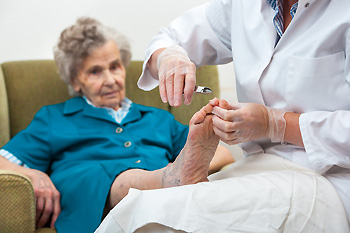
As people age, the feet often experience changes that can lead to discomfort and mobility issues. Elderly individuals frequently develop bunions, which are bony bumps that form at the base of the big toe and can cause pain, swelling, and difficulty with footwear. Thickened or discolored toenails are also common and may be caused by fungal infections or difficulty with proper nail care. Corns, which are areas of thickened skin from repeated pressure or friction, can lead to tenderness and a burning sensation. These foot problems may affect balance and increase the risk of falls. Symptoms such as aching, stiffness, or visible deformities should not be ignored. If you are elderly and notice any changes to your feet, it is suggested that you contact a podiatrist who can provide a proper diagnosis and offer appropriate treatment solutions.
If you need your feet checked, contact one of our podiatrists of The Podiatry Center. Our doctors will attend to all of your foot and ankle needs and provide you with quality treatment.
Geriatrics and Podiatry
When people age, some common issues that may occur are bone density loss, dry skin, poor circulation, and rough brittle nails. These issues may also affect your foot health if the necessary steps are not taken to alleviate the problems.
It is important to take care of your feet because feet that are injured or diseased can affect your overall health. Having painful feet hinders your ability to do daily activities or may decrease your willingness to do the things that you need to do.
Visiting Your Geriatrician
As we age, health problems become more likely, so it is essential to visit your doctor for check-ups to ensure that you are doing the best you can to take care of your health. It is recommended to check your feet frequently for any possible cuts, bruises, swelling, corns or any other irregularities.
Taking Care of Elderly Feet
Cracked or dry feet can be treated by applying moisturizer often. It is also important not to wear old socks because the older the sock is, the higher the possibility there will be that there is bacteria there. Wear fresh socks and make sure they fit properly.
Proper foot health means that you can have a more active lifestyle and you will not be bogged down by pain. Foot health also leads to good circulation, which is paramount for overall health.
If you have any questions, please feel free to contact one of our offices located in Richmond and Glen Allen, VA . We offer the newest diagnostic tools and technology to treat your foot and ankle needs.
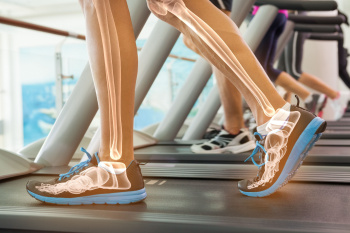
Running outdoors and on a treadmill each place different demands on the feet, toes, and ankles. Treadmill running offers a flat, cushioned surface that may reduce impact and be easier on the joints, but it can also limit the engagement of stabilizing muscles in the ankles and feet. Because the treadmill belt assists forward movement, runners may experience shorter strides and reduced ankle flexing movement. In contrast, outdoor running requires the body to adapt to uneven terrain, which strengthens the smaller muscles in the feet and ankles, but may also increase the risk of sprains, stress fractures, and tendon strain. Foot positioning, stride length, and ankle alignment can vary significantly depending on the running surface, and these differences can affect the arches, toes, and heel strike. Plus, improper footwear or technique in either setting can lead to pain or injury over time. A podiatrist can evaluate foot mechanics, identify imbalances, and recommend running strategies or footwear to help prevent injuries for either running surface. If you have foot problems related to running, it is suggested that you schedule an appointment with a podiatrist for an exam and appropriate treatment.
All runners should take extra precaution when trying to avoid injury. If you have any concerns about your feet, contact one of our podiatrists of The Podiatry Center. Our doctors will treat your foot and ankle needs.
How to Prevent Running Injuries
There are a lot of mistakes a runner can make prior to a workout that can induce injury. A lot of athletes tend to overstretch before running, instead of saving those workouts for a post-run routine. Deep lunges and hand-to-toe hamstring pulls should be performed after a workout instead of during a warmup. Another common mistake is jumping into an intense routine before your body is physically prepared for it. You should try to ease your way into long-distance running instead of forcing yourself to rush into it.
More Tips for Preventing Injury
If you have any questions, please feel free to contact one of our offices located in Richmond and Glen Allen, VA . We offer the newest diagnostic and treatment technologies for all your foot care needs.

Turf toe sounds like a sports injury, but it can happen to anyone. This painful sprain of the big toe joint happens when the toe bends too far upward, overstretching the ligaments. Athletes on artificial turf are common victims, but so are yogis, dancers, and even people tripping on stairs. A simple misstep in flexible shoes can do it. At first, it may feel like a mild ache, but swelling and stiffness quickly set in, making it hard to push off when walking. Without rest, it can linger, turning a minor sprain into a chronic problem. Relief includes taping and wearing stiff-soled shoes to limit movement. Severe cases may require targeted exercises or surgery. If your big toe hurts after an awkward bend, it is suggested that you schedule an appointment with a podiatrist for a proper diagnosis and appropriate treatment.
Toe pain can disrupt your daily activities. If you have any concerns, contact one of our podiatrists of The Podiatry Center. Our doctors can provide the care you need to keep you pain-free and on your feet.
What Causes Toe Pain?
Most severe toe pain is caused due to a sports injury, trauma from dropping something heavy on the toe, or bumping into something rigid. Other problems can develop over time for various reasons.
Toe pain can be caused by one or more ailments. The most common include:
When to See a Podiatrist
Diagnosis
In many cases the cause of toe pain is obvious, but in others, a podiatrist may want to use more advanced methods to determine the problem. These can range from simple visual inspections and sensation tests to X-rays and MRI scans. Prior medical history, family medical history, and any recent physical traumatic events will all be taken into consideration for a proper diagnosis.
Treatment
Treatments for toe pain and injuries vary and may include shoe inserts, padding, taping, medicines, injections, and in some cases, surgery. If you believe that you have broken a toe, please see a podiatrist as soon as possible.
If you have any questions please feel free to contact one of our offices located in Richmond and Glen Allen, VA . We offer the newest diagnostic tools and technology to treat your foot and ankle needs.
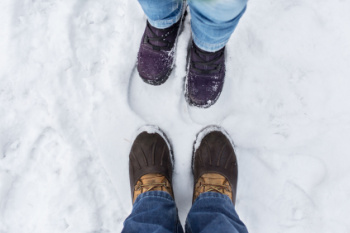
Snowboarders often suffer from a range of foot and ankle issues caused by falls, tight boots, and cold conditions. Impact from jumps and rough landings can lead to bruises, sprains, and even fractures. When pain appears on the outer front of the ankle, careful diagnosis is very important. Sometimes, a small fracture can be mistaken for a simple ligament sprain, yet it might need surgery. Doctors should examine such pain closely to determine the real cause. Other problems include blisters, swelling, and nerve pain that can worsen with continued pressure. Wearing properly fitting boots and doing regular stretching exercises can help reduce these issues. Regular foot check-ups can stop further damage and speed a full recovery on the slopes. If pain or swelling from a snowboarding experience does not improve, it is suggested that you see a podiatrist for a thorough check-up and proper care.
Sports related foot and ankle injuries require proper treatment before players can go back to their regular routines. For more information, contact one of our podiatrists of The Podiatry Center. Our doctors can provide the care you need to keep you pain-free and on your feet.
Sports Related Foot and Ankle Injuries
Foot and ankle injuries are a common occurrence when it comes to athletes of any sport. While many athletes dismiss the initial aches and pains, the truth is that ignoring potential foot and ankle injuries can lead to serious problems. As athletes continue to place pressure and strain the area further, a mild injury can turn into something as serious as a rupture and may lead to a permanent disability. There are many factors that contribute to sports related foot and ankle injuries, which include failure to warm up properly, not providing support or wearing bad footwear. Common injuries and conditions athletes face, including:
Sports related injuries are commonly treated using the RICE method. This includes rest, applying ice to the injured area, compression and elevating the ankle. More serious sprains and injuries may require surgery, which could include arthroscopic and reconstructive surgery. Rehabilitation and therapy may also be required in order to get any recovering athlete to become fully functional again. Any unusual aches and pains an athlete sustains must be evaluated by a licensed, reputable medical professional.
If you have any questions please feel free to contact one of our offices located in Richmond and Glen Allen, VA . We offer the newest diagnostic and treatment technologies for all your foot and ankle needs.
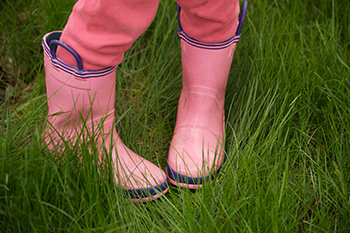
Many children walk with their feet turned inward or outward, also known as in-toeing or out-toeing. In-toeing occurs when the feet point inward while walking. It is often caused by inward twisting of the shinbone or thighbone, or a curved foot shape present at birth. Out-toeing, where the feet point outward, may result from an outward twist in the leg bones or hip position. These conditions are usually painless and improve as a child grows. They can be influenced by genetics, fetal positioning, or natural variations in bone development.. Encouraging proper footwear and monitoring walking patterns can help ensure gradual healthy foot development. If your child has feet that turn inward or outward, it is suggested that a podiatrist is consulted who can rule out potential conditions, and can monitor your child’s foot health.
Making sure that your children maintain good foot health is very important as they grow. If you have any questions, contact one of our podiatrists of The Podiatry Center. Our doctors can provide the care you need to keep you pain-free and on your feet.
Keeping Children's Feet Healthy
Having healthy feet during childhood can help prevent medical problems later in life, namely in the back and legs. As children grow, their feet require different types of care. Here are some things to consider...
Although babies do not walk yet, it is still very important to take care of their feet.
Avoid putting tight shoes or socks on his or her feet.
Allow the baby to stretch and kick his or her feet to feel comfortable.
As a toddler, kids are now on the move and begin to develop differently. At this age, toddlers are getting a feel for walking, so don’t be alarmed if your toddler is unsteady or ‘walks funny’.
As your child gets older, it is important to teach them how to take care of their feet.
Show them proper hygiene to prevent infections such as fungus.
Be watchful for any pain or injury.
Have all injuries checked by a doctor as soon as possible.
Comfortable, protective shoes should always be worn, especially at play.
If you have any questions please feel free to contact one of our offices located in Richmond and Glen Allen, VA . We offer the newest diagnostic and treatment technologies for all your foot and ankle needs.
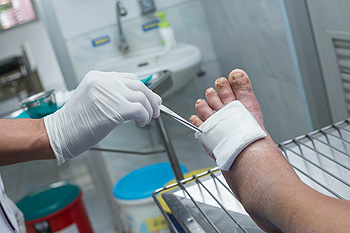
Foot ulcers are open sores, commonly seen in patients with diabetes, that can lead to severe complications if not promptly addressed. Among the most serious side effects of diabetic foot ulcers is gangrene, a dangerous condition where foot or toe tissue dies due to insufficient blood flow or infection. Gangrene usually begins with symptoms like skin discoloration, swelling, numbness, severe pain, or an unpleasant-smelling discharge. When left untreated, gangrene may rapidly worsen, requiring antibiotics or emergency surgery, such as removal of damaged tissue or even loss of toes, the foot, or part of the ankle. Patients with conditions that impair circulation, such as peripheral artery disease or diabetes, are particularly vulnerable to gangrene following foot ulcers. A podiatrist plays an important role in preventing these severe outcomes by assessing circulation, identifying infections early, and providing appropriate wound care or surgery if necessary. If you have foot ulcers from diabetes, it is suggested that you schedule an appointment with a podiatrist for an exam, diagnosis, and regular foot care.
Diabetic foot care is important in preventing foot ailments such as ulcers. If you are suffering from diabetes or have any other concerns about your feet, contact one of our podiatrists from The Podiatry Center. Our doctors can provide the care you need to keep you pain-free and on your feet.
Diabetic Foot Care
Diabetes affects millions of people every year. The condition can damage blood vessels in many parts of the body, especially the feet. Because of this, taking care of your feet is essential if you have diabetes, and having a podiatrist help monitor your foot health is highly recommended.
The Importance of Caring for Your Feet
Patients with diabetes should have their doctor monitor their blood levels, as blood sugar levels play such a huge role in diabetic care. Monitoring these levels on a regular basis is highly advised.
It is always best to inform your healthcare professional of any concerns you may have regarding your feet, especially for diabetic patients. Early treatment and routine foot examinations are keys to maintaining proper health, especially because severe complications can arise if proper treatment is not applied.
If you have any questions please feel free to contact one of our offices located in Richmond and Glen Allen, VA . We offer the newest diagnostic and treatment technologies for all your foot and ankle needs.

A heel spur is a bony growth that develops on the underside of the heel bone, often caused by calcium deposits. This condition typically results from repetitive stress or strain on the foot, leading to inflammation and the formation of the spur. The most common symptom of a heel spur is sharp pain at the heel, especially during the first steps in the morning or after long periods of rest. This pain is usually felt at the front of the heel and may radiate to the arch. Common causes of heel spurs include prolonged pressure from wearing improper footwear, obesity, or conditions such as plantar fasciitis. Diagnosis of a heel spur is typically done through a physical examination and confirmed with imaging tests such as X-rays. These tests help visualize the bony growth and rule out other potential causes of heel pain. If you have heel pain, it is suggested that you contact a podiatrist who can accurately diagnose and treat heel spurs.
Heel spurs can be incredibly painful and sometimes may make you unable to participate in physical activities. To get medical care for your heel spurs, contact one of our podiatrists from The Podiatry Center. Our doctors will do everything possible to treat your condition.
Heels Spurs
Heel spurs are formed by calcium deposits on the back of the foot where the heel is. This can also be caused by small fragments of bone breaking off one section of the foot, attaching onto the back of the foot. Heel spurs can also be bone growth on the back of the foot and may grow in the direction of the arch of the foot.
Older individuals usually suffer from heel spurs and pain sometimes intensifies with age. One of the main condition's spurs are related to is plantar fasciitis.
Pain
The pain associated with spurs is often because of weight placed on the feet. When someone is walking, their entire weight is concentrated on the feet. Bone spurs then have the tendency to affect other bones and tissues around the foot. As the pain continues, the feet will become tender and sensitive over time.
Treatments
There are many ways to treat heel spurs. If one is suffering from heel spurs in conjunction with pain, there are several methods for healing. Medication, surgery, and herbal care are some options.
If you have any questions feel free to contact one of our offices located in Richmond and Glen Allen, VA . We offer the latest in diagnostic and treatment technology to meet your needs.